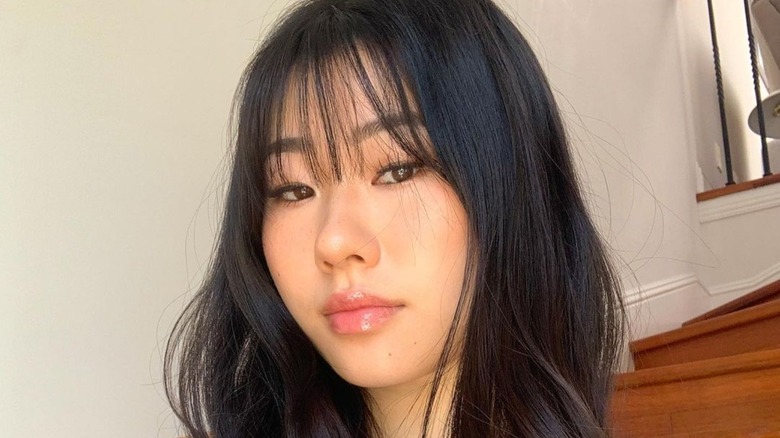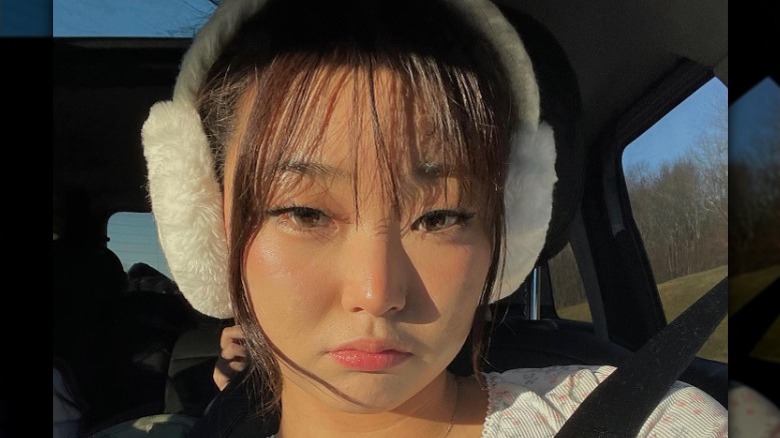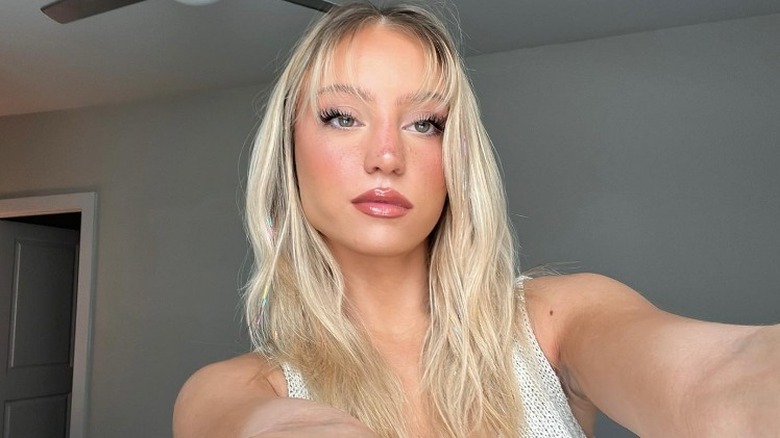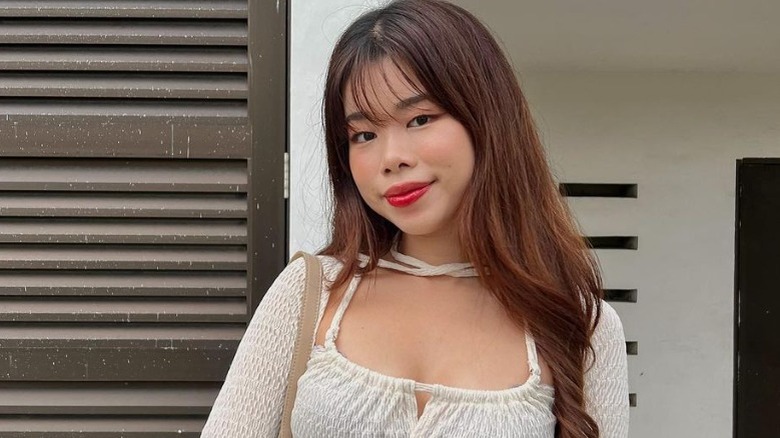Why You'll Want To Embrace Light And Breezy Korean Air Bangs
Bangs are the halo of the face, angel. Truly, they are. Have you ever seen someone with bangs and not thought they were adorable? It makes you want to get bangs yourself, every single time. And yes, they have their downsides. They're high-maintenance, require constant styling, and you end up just growing them out every time. But can you deny their cuteness when styled to perfection? We certainly can't. And that's exactly why we keep seeing them seep in and out of hair trends through the years. Bangs are addictive, and we all keep coming back for more.
Recently, the bang style that has stolen people's hearts is Korean air bangs, and they are so worth the hype. This wispy dream of a hairstyle fell directly from heaven to frame your face in angelic perfection, no matter who you are. Incorporating the lightness of curtain bangs and the boldness of a fringe, they are a totally new and exciting take on bangs.
What are Korean air bangs?
The look we now know as air bangs is the new girl on the block, and is deeply inspired by Korean hairstyles. Specifically the decades-long trend of airy, ultra-thin bangs that reach below the eyebrow. So what makes them so special? Their soft, whimsical nature, of course. Their wispiness allows your face and forehead to peek through, rather than be hidden away by the thickness of a regular fringe.
According to Hair.com by L'Oreal, Korean air bangs can be customizable in length in order to accentuate your best features. If you want to show off your cheekbones, cut them at eye length, and if you want to bring attention to your eyes, leave them to end just below the brow.
If you want to achieve these flattering bangs, ask your hairstylist to first give you straight bangs (or a fringe), and then thin them out to wispy perfection. You can also ask them to leave some longer framing pieces at the edges for an easier transition into curtain bangs if you choose to grow them out after a while.
How do they differ from curtain bangs?
Air bangs and curtain bangs are very different, but they both work to bring out your best features by framing the face with long-ish pieces that don't hide too much of anything. Curtain bangs do this by starting out shorter in the middle and gradually becoming longer towards the sides of the face, leaving framing pieces that fall at the temples. These bangs tend to part down the middle, rather than go straight across the forehead like a fringe. They are the easiest to style when the mood strikes, and to hide away when they're unwanted.
Air bangs, on the other hand, are thinner and lighter than curtain bangs, but don't shy away from length. They go straight across the forehead and cut off beneath the brow (slightly over the eyes), but are wispy enough to still show off the forehead and eyebrows. And while they're typically uniform in length, they can look elevated when paired with longer pieces that frame the temples.
Are they right for me?
This cute hair trend is so airy and effortless that it flatters most people, regardless of their face shape. Big or small forehead, oval or round face, full or hollow cheeks — anyone can try this one out to complement their unique features. It's a matter of taste, in the end, but we're here to vouch for the versatility of air bangs. They are magical.
For a rounder face, we'd recommend going for longer pieces that reach your eyes (as long as they don't poke at them uncomfortably). Longer air bangs draw one's gaze further down, creating the illusion of a longer face. Shorter air bangs, ending at the top of the eyebrows or so, work best for those with longer and oval-shaped faces. If your forehead is on the bigger side, you may also want to opt for longer air bangs, whereas people with small foreheads might want to stick to shorter air bangs and add those longer side pieces for a truly flattering effect.



